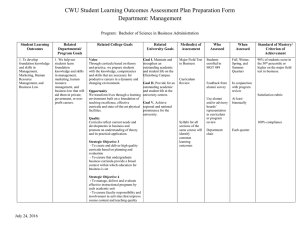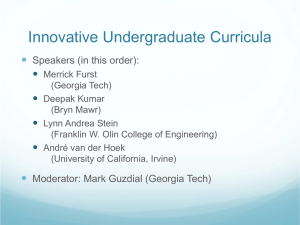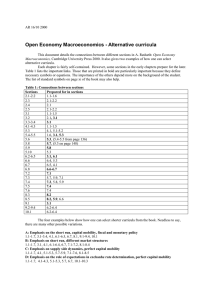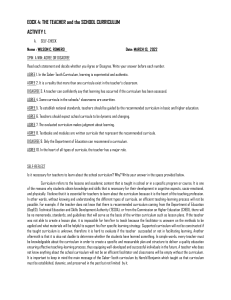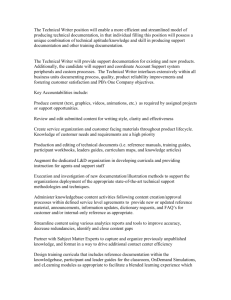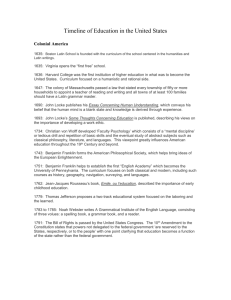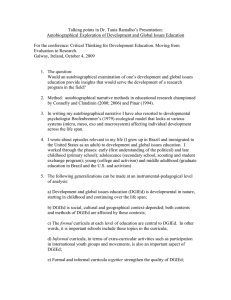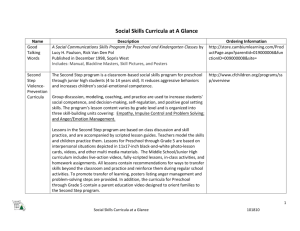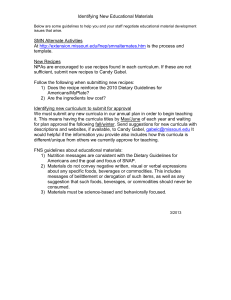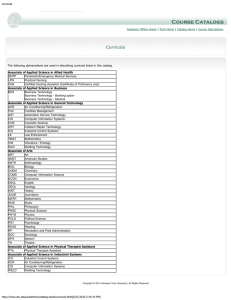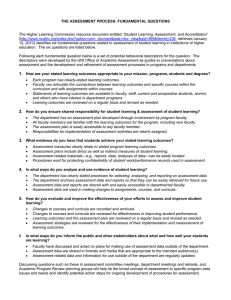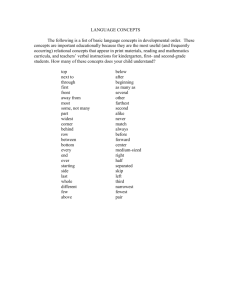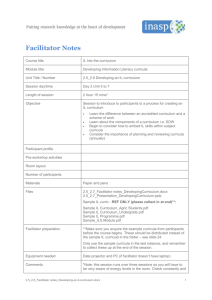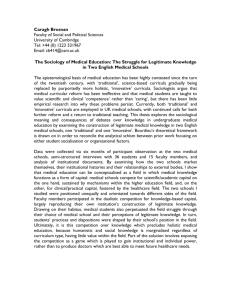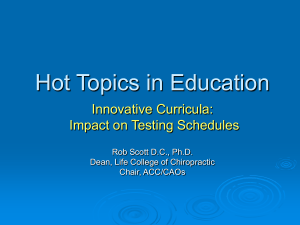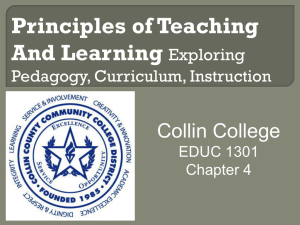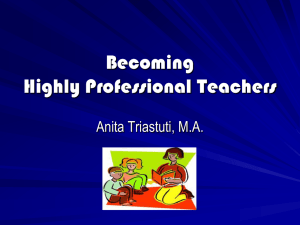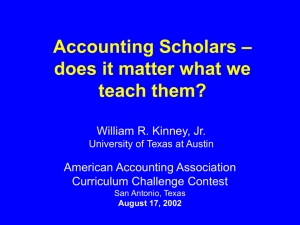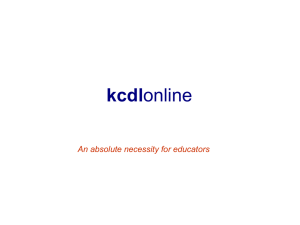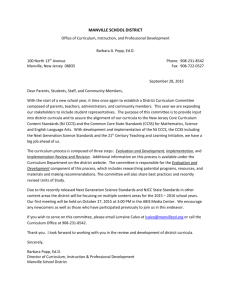Jennifer Rasmussen
advertisement
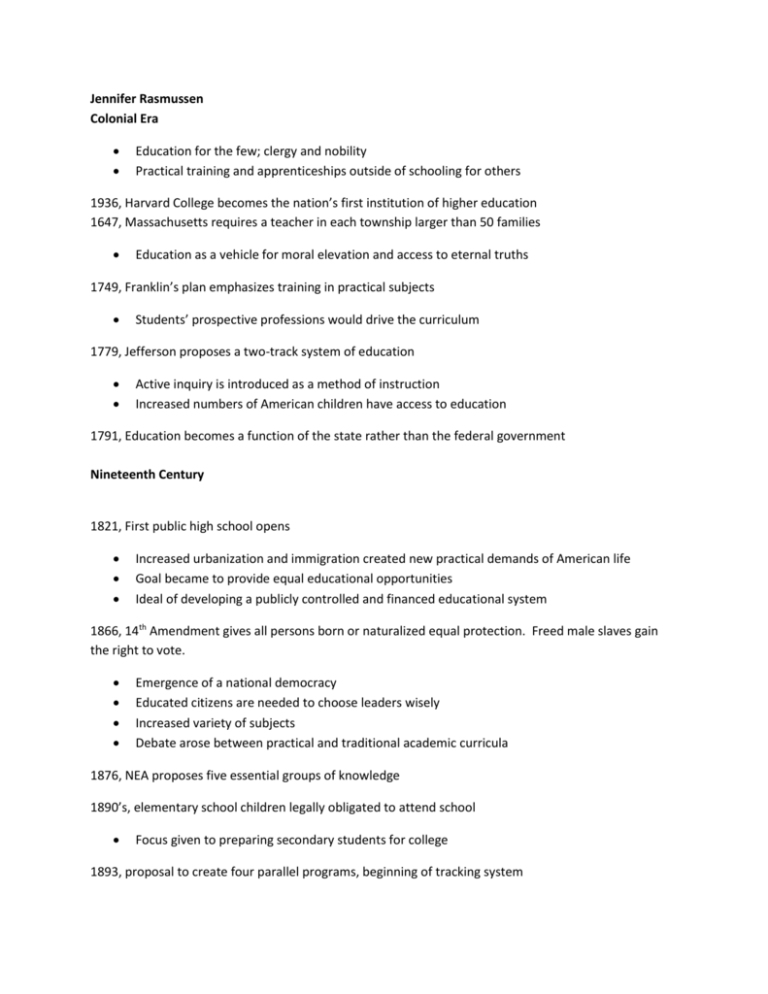
Jennifer Rasmussen Colonial Era Education for the few; clergy and nobility Practical training and apprenticeships outside of schooling for others 1936, Harvard College becomes the nation’s first institution of higher education 1647, Massachusetts requires a teacher in each township larger than 50 families Education as a vehicle for moral elevation and access to eternal truths 1749, Franklin’s plan emphasizes training in practical subjects Students’ prospective professions would drive the curriculum 1779, Jefferson proposes a two-track system of education Active inquiry is introduced as a method of instruction Increased numbers of American children have access to education 1791, Education becomes a function of the state rather than the federal government Nineteenth Century 1821, First public high school opens Increased urbanization and immigration created new practical demands of American life Goal became to provide equal educational opportunities Ideal of developing a publicly controlled and financed educational system 1866, 14th Amendment gives all persons born or naturalized equal protection. Freed male slaves gain the right to vote. Emergence of a national democracy Educated citizens are needed to choose leaders wisely Increased variety of subjects Debate arose between practical and traditional academic curricula 1876, NEA proposes five essential groups of knowledge 1890’s, elementary school children legally obligated to attend school Focus given to preparing secondary students for college 1893, proposal to create four parallel programs, beginning of tracking system Greater emphasis given to modern subjects, including sciences Twentieth Century Opposing forces meet in educational reform; progressivists, traditionalists and nontraditionalists favoring either society or individual centered curricula 1916, Terman and team at Stanford complete an American version of the Binet-Simon scale and the concept of an IQ test 1918, Federal Bulletin to broaden the scope of secondary schools to include all of life’s experiences Education’s place is to prepare each individual so they can in turn contribute to society 1918, Bobbit produces The Curriculum attempting to define the means by which curricula are written Movement to immediate and tangible results rather than intangible outcomes “common good” (beginning of behavioral objectives?) 1930’s, Eight-year study shows that individual curricula can prepare students for college as well as subject-based curricula World War II – Focus of education shifts to preparedness and training for the good of society 1957, Sputnik launch by Russia. American fear of Russian superiority is launched as well. 1946, ‘Baby Boomer’ generation is begun foreshadowing unprecedented growth in public schools 1960’s, controlled ‘teacher-proof’ curriculum packages are presented After Vietnam war, defiance toward American government leads to divided nation between individualistic and society supporting curricula 1970’s, beginning of ‘accountability’ movement to increase efficiency of American schools 1981 Nation at Risk is published announces a crisis in American schools focusing on the need for economic development. Shift returns to a single, subject-centered curriculum. Twenty-first Century 2001, No Child Left Behind sets expectations for all students to make ‘adequate yearly progress’. Plans developed to provide financial support during the first two years and sanctions after that. General expectation for standardization and uniformity as indicated by standardized assessments.
